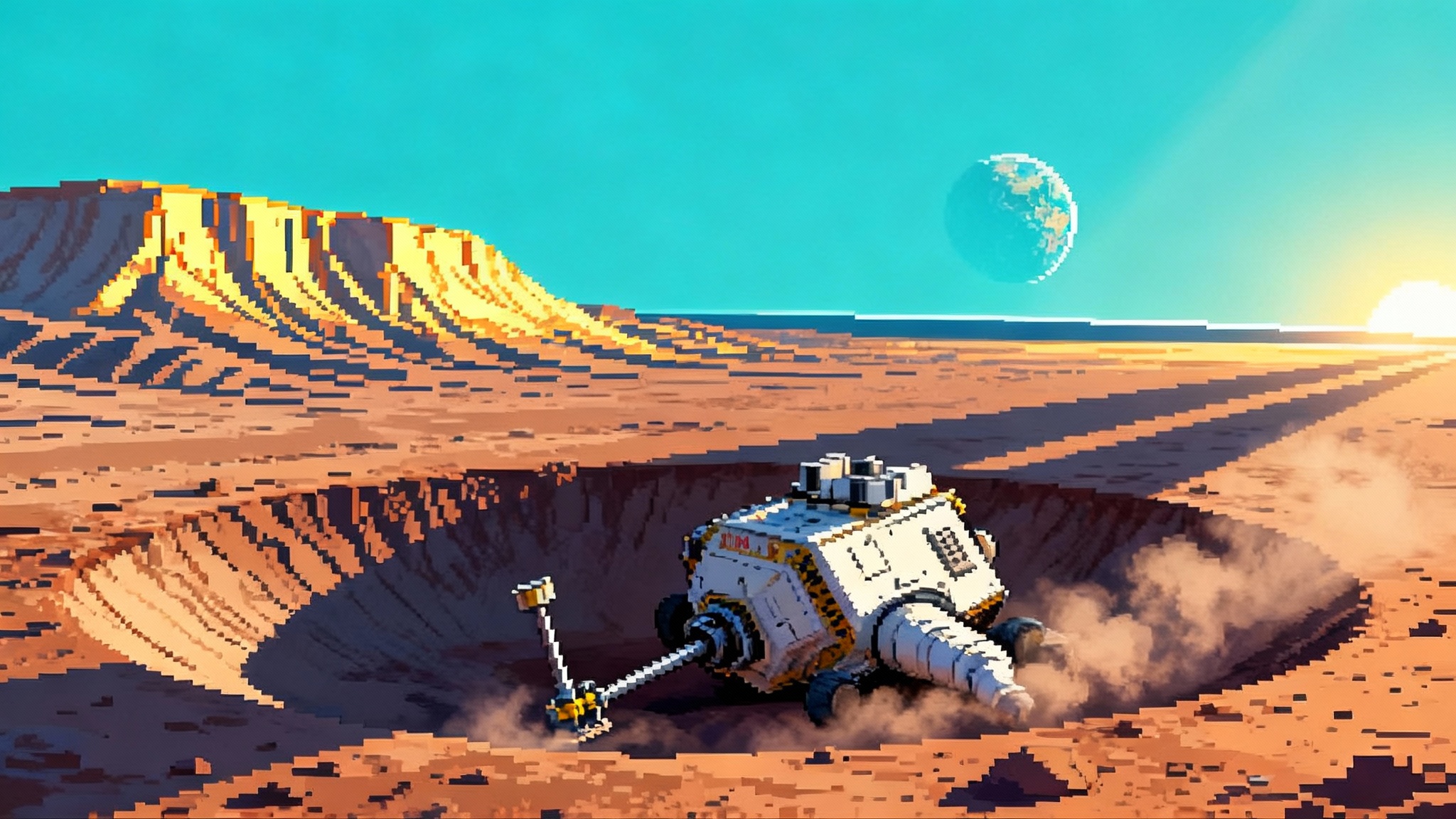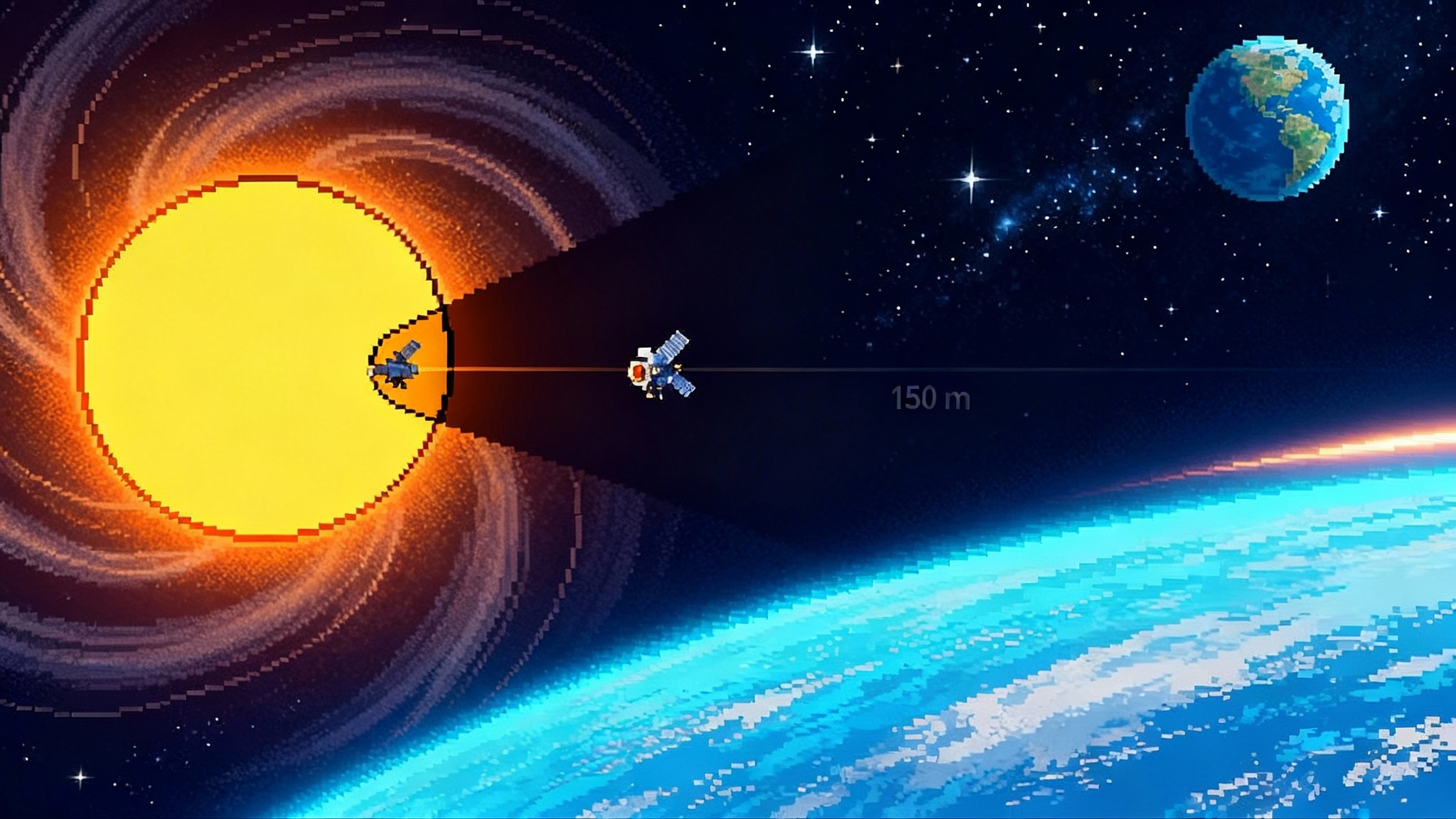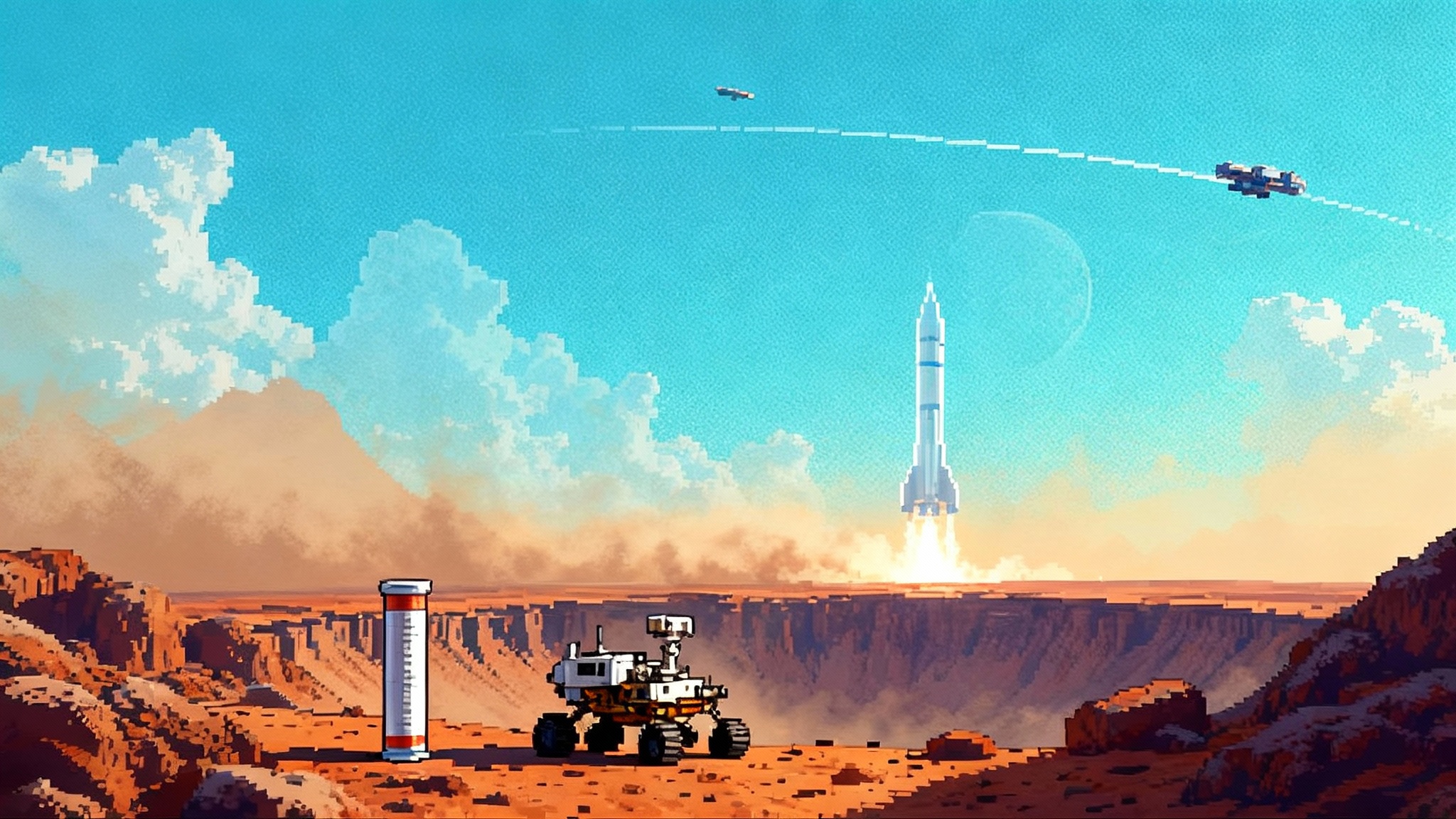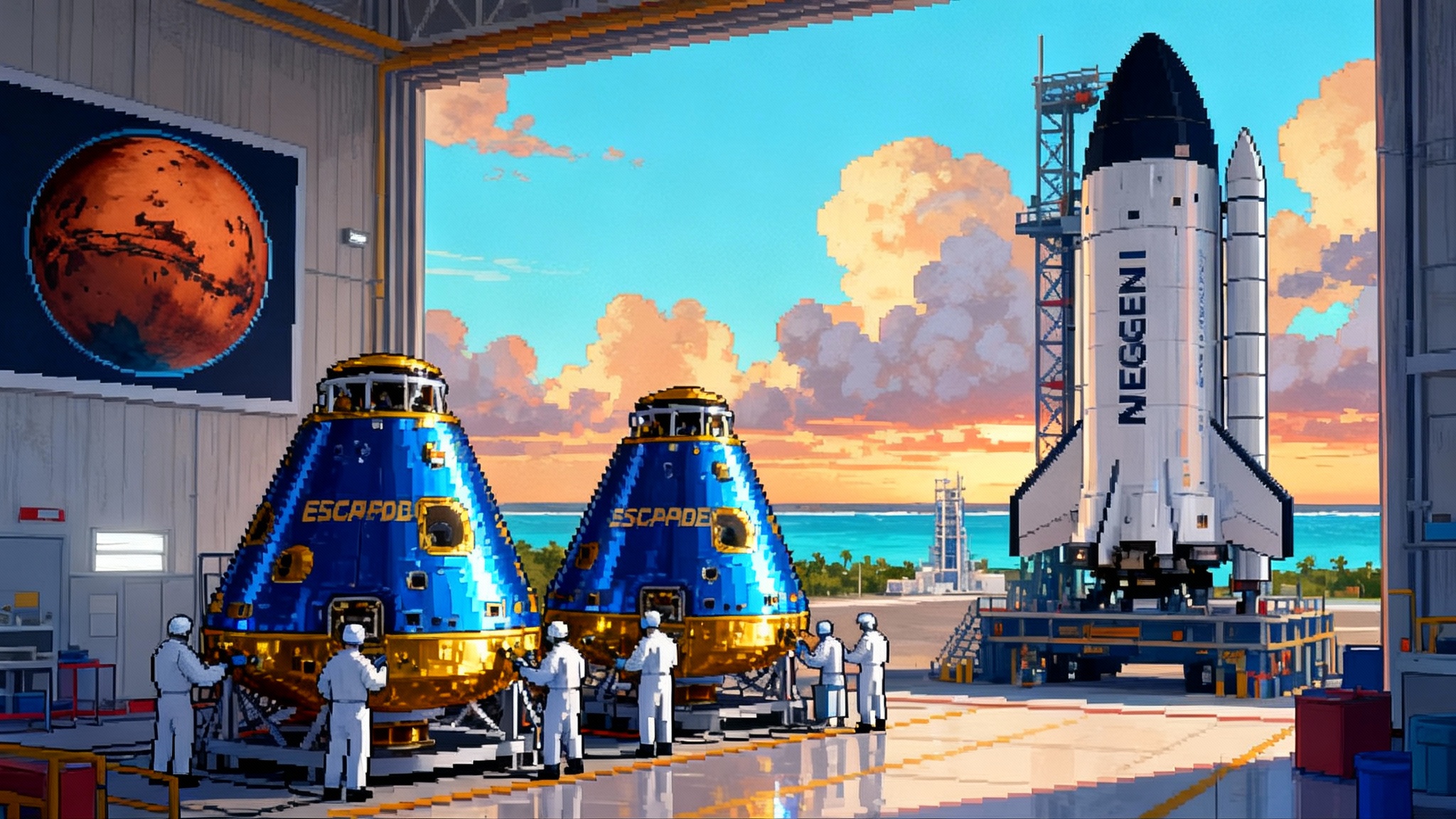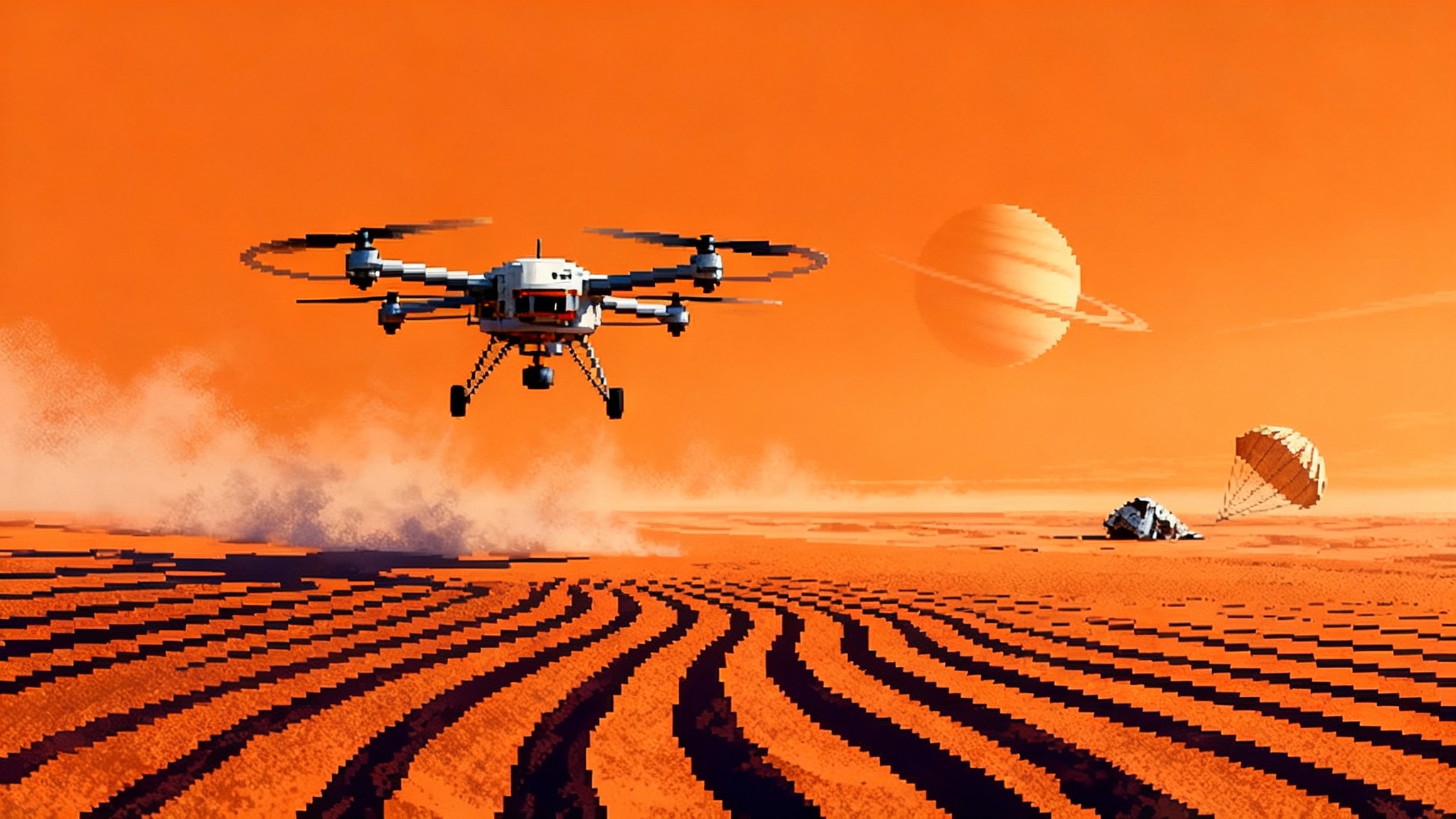China’s Tianwen‑2 launches to a quasi‑moon, then 311P
China launched Tianwen-2 to sample Earth’s quasi-satellite Kamo‘oalewa and return material by 2027 before continuing on to active asteroid 311P/PANSTARRS. The dual-target mission showcases solar-electric propulsion and has clear planetary-defense value.
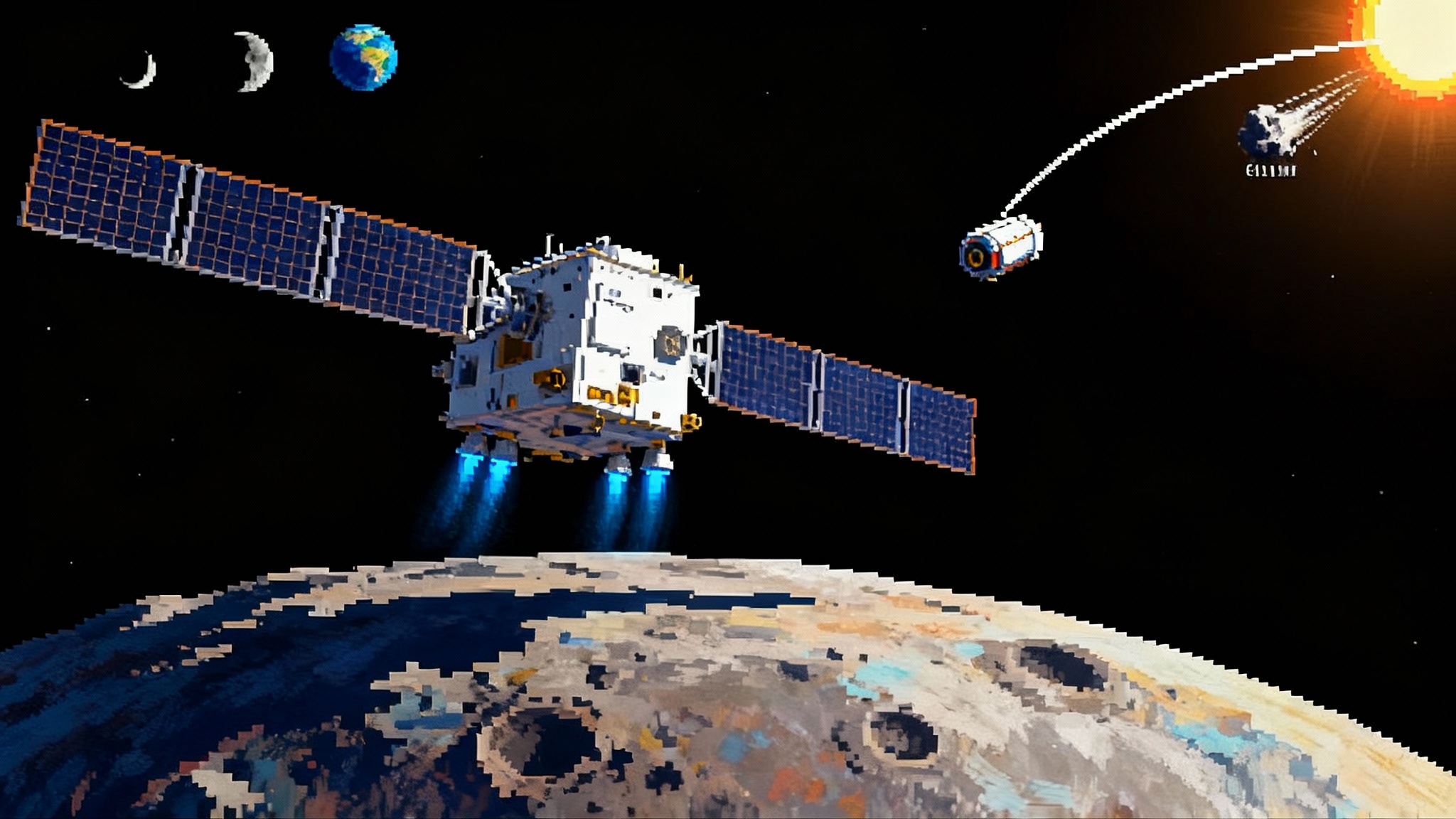
A launch with a built-in encore
On May 28, 2025 Coordinated Universal Time, China’s Tianwen-2 lifted off from Xichang on a Long March 3B, beginning a rare kind of expedition. The probe is headed for Kamo‘oalewa, a house-sized near-Earth asteroid that loops around the Sun almost in lockstep with us and appears to circle Earth from our point of view. If all goes to plan, Tianwen-2 will arrive in mid-2026, collect at least 100 grams of material, then drop a return capsule to Earth in late 2027. After that drop-off, the main spacecraft will use Earth’s gravity to bend outward and rendezvous years later with another target, 311P/PANSTARRS, an active asteroid famous for sprouting multiple tails. It is one launch, two destinations, and three big storylines: origins, propulsion, and planetary defense. China framed it that way when the mission lifted off on May 28.
What a quasi-moon actually is
Imagine walking around a track with a companion who keeps pace but wanders a few lanes in and out. That is Kamo‘oalewa. It is not a true satellite the way the Moon is. It orbits the Sun, but its year is so similar to ours that in a frame centered on Earth it seems to drift in a lazy, looping dance around us over decades. That is why astronomers call it a quasi-satellite. The orbit is stable enough to visit, close enough to sample, and similar enough to Earth’s path that the propellant bill is far lower than a trip to the main asteroid belt.
Quasi-satellites are rare opportunities. They offer asteroid science without the years of deep-space cruise that dominate classical missions. For space agencies, they are real-world training grounds for intercepting small bodies that sometimes wander close to Earth.
Could Kamo‘oalewa be lunar shrapnel?
Kamo‘oalewa’s spectrum looks odd for a run-of-the-mill near-Earth asteroid. Observations with large ground telescopes suggest its surface reflects light more like weathered lunar silicates than typical stony asteroids. That does not prove origin, but it raises a tantalizing possibility. In 2021 a team reported spectroscopic evidence for lunar origin, and subsequent modeling explored whether a violent hit on the Moon could loft fragments into Earth-like orbits. One candidate event is the formation of Giordano Bruno crater on the Moon’s far side, which could have ejected shards into co-orbital paths with Earth.
Why this matters: if Kamo‘oalewa is lunar material, Tianwen-2 can bring home pieces of the Moon that formed in a different place and era than the Apollo samples. That would give scientists a second vantage on how micrometeorites, solar wind, and cosmic radiation alter exposed surfaces over millions of years. Even if the samples turn out not to be lunar, they will still pin down a long-standing mystery about how small bodies age near the Sun. China’s recent farside samples rewrite the Moon's water map effort underlines the country’s growing curation and analysis skills.
How a single spacecraft pulls off two destinations
The hardest part of small-body missions is not the flyout, it is the choreography at the destination. Tianwen-2 is designed like a multi-tool rather than a single-purpose instrument.
- It carries high-resolution cameras and spectrometers to scout the surface, map hazards, and pick a safe site.
- It aims to try two sampling approaches. One is touch-and-go, the fast dip that worked for Japan’s Hayabusa2 and NASA’s OSIRIS-REx. The other is anchor-and-attach, where a small lander braces itself with arms and drills to draw material from harder ground. Using both methods increases the odds of getting diverse grains, from fluffy dust to crusty clasts.
- It includes a detachable return capsule to ferry the sample through Earth’s atmosphere in 2027, while the rest of the bus continues on its extended journey.
The propulsion is the quiet hero. Tianwen-2 uses solar-electric propulsion for its deep-space maneuvers. Think of chemical rockets as sprinting and solar-electric thrusters as power walking with lungs of steel. Instead of a short, hot burn, ion or Hall-effect thrusters sip xenon propellant and push gently for weeks and months, steadily raising or shaping orbits. That steady push makes precise rendezvous, sample-drop timing, and a second destination feasible without a second launch.
Engineers also budgeted clever gravity work. After collecting its sample, the spacecraft will swing past Earth to shed or gain energy and redirect toward the main belt, a playbook seen in BepiColombo’s reroute to Mercury. That slingshot is not just a free kick. It also offers a chance to relay data, recalibrate, and update mission plans with whatever the Kamo‘oalewa work reveals.
Why 311P/PANSTARRS is the perfect encore
If the first act is about origin, the second act is about activity. 311P/PANSTARRS is a roughly half-kilometer object in the main belt that behaves like a comet. In 2013, astronomers using Hubble spotted multiple dust tails that changed shape over days. The leading explanation is rotational shedding, where sunlight subtly spins up a rubble-pile asteroid until weak surface material starts to slide off and drift into space.
A close inspection by Tianwen-2 could tell us how and where the dust is emitted, what particle sizes are involved, and how fast the spin is changing. Those clues feed into two big questions. First, how do small asteroids fall apart with age and sunlight. Second, how often does that process create meteoroid streams that cross Earth’s path. In other words, this is a physics lab for how rocks evolve and how debris spreads in our neighborhood.
The speed advantage of dual-target missions
Traditional deep-space missions are long-haul trucks: one pickup, one delivery. Tianwen-2 looks more like a courier route. Once you pay the cost to leave Earth, extra stops become surprisingly cheap if you have the right propulsion and navigation.
There are tradeoffs. A dual-target mission must manage propellant margins tightly, keep redundant sensors healthy for a decade, and accommodate changing science priorities along the way. The upside is compelling. You double the return on every subsystem, from cameras to radios. You test operational concepts twice, which lowers risk for follow-ons. You also build skills that translate to planetary defense, where agencies may need to inspect and characterize more than one object before committing to a deflection.
Planetary defense, sharpened by samples
Knowing the what and the how of a small body is the foundation for any deflection plan. Kinetic impactors are sensitive to target properties. Hit a monolithic boulder and you get one momentum transfer. Hit a loosely bound rubble pile and you get another, with ejecta that can either amplify or damp the push. Samples are the gold standard for calibrating those models.
Tianwen-2’s Kamo‘oalewa sample could answer questions that remote sensing alone cannot.
- Grain-size distribution: does regolith skew to talc-like dust or sand-like grains. That affects how shockwaves move through the material.
- Porosity and cohesion: how easily do particles stick, especially under microgravity. That influences crater formation and ejecta behavior.
- Space-weathering fingerprints: how solar wind and micrometeoroids alter surfaces near 1 astronomical unit. That matters for interpreting telescopic spectra of other near-Earth objects.
With those properties in hand, models of kinetic impact or gravity tractor performance become more predictive. The payoff is not just academic. It is a shorter path from a survey detection to a confident decision about what intervention would work and how much warning time is needed.
Why the 2027 return window is ambitious but plausible
A round trip within about two years of arrival is aggressive compared with main-belt sample campaigns, but Kamo‘oalewa’s orbit is unusually convenient. Because it stays close to Earth’s distance from the Sun, lighting, communications, and thermal conditions are friendlier than for most targets. The required change in velocity to match orbits is also lower than for a typical near-Earth rendezvous.
There are still knots to untie. The asteroid is small, fast-rotating, and likely lumpy, which complicates hovering and touchdown. Anchoring on a weak-gravity surface can be like trying to plant a tent stake in a snowdrift. That is why Tianwen-2 carries both touch-and-go and anchor-and-attach options. One can succeed if the other does not. The mission team also plans extended reconnaissance before attempting sampling, using time to build a digital terrain model and a risk map.
If the sample capsule lands on schedule in late 2027, curation becomes the next sprint. China has already built capabilities for handling pristine lunar samples, as seen in Tianwen-3 sample return plans and related lunar work. Asteroid grains introduce new needs, from ultra-dry nitrogen cabinets to rapid characterization to decide subsampling for international collaborators. Getting this right is not just lab work. It is reputation work. Fast, careful, sharable results will set the tone for future partnerships.
A broader shift in how we explore
Tianwen-2 does not come out of nowhere. It follows a decade of missions that stretched their wings with creative itineraries. Japan’s Hayabusa2 returned samples from Ryugu and is now on a bonus tour of another small body. NASA’s OSIRIS-REx delivered Bennu material and is pivoting to become OSIRIS-APEX for a close study of Apophis. The pattern is clear: build buses that can do more than one thing, then give them second and third acts.
Three enablers make this possible.
- Solar-electric propulsion has matured from station-keeping tech to primary deep-space engines. High efficiency means longer reach with the same launch.
- Guidance and navigation software now handle microgravity proximity operations with more autonomy, reducing the bandwidth burden and allowing slower, safer approaches.
- Ground operations have learned to treat long missions like product roadmaps. Teams bake in upgrades, mode changes, and risk buy-downs across years, not months.
China’s twist is to aim the second act at an active asteroid. That choice maximizes the scientific diversity of a single flight and stacks training value for future comet work. It also signals confidence that a spacecraft can stay healthy and useful for a decade.
What to watch next
Between now and mid-2026, Tianwen-2 will spend months applying its gentle thrusters and trimming its approach. There will likely be cruise-phase imagery of Earth and the Moon that doubles as a check on instruments. Expect a long stretch of quiet, followed by a quickening cadence as the spacecraft begins optical navigation and shape modeling of Kamo‘oalewa.
Key milestones to mark on a calendar:
- Approach and mapping: mid-2026. Look for the first resolved images and a preliminary shape model. That will tell us how fast Kamo‘oalewa spins and where boulders cluster.
- Sampling attempt: late 2026 or early 2027, depending on terrain and lighting. A clean touch-and-go would be a good sign that the surface is forgiving. An anchor-and-attach attempt would reveal how cohesive the crust is.
- Earth return: late 2027. The reentry capsule aims for a terrestrial landing zone where recovery teams can move the sample into nitrogen within minutes.
- Gravity turn toward 311P: shortly after the drop-off. Telemetry will confirm the trajectory tweak, then the mission will settle into a long cruise to a 2030s rendezvous.
Practical takeaways
- For scientists: begin cross-lab protocols now. Decide how to split small grains efficiently between spectroscopy, micro-tomography, and organic analysis. Draft comparative studies with Apollo and Luna samples to quickly test the lunar-origin hypothesis.
- For mission designers: treat Tianwen-2 as a template. Pair a high-value near-Earth target with a diverse second destination. Size the solar arrays and xenon for the encore, not just the headliner.
- For planetary-defense planners: translate the returned material properties directly into impactor and tractor simulations. Use Kamo‘oalewa data to validate ejecta models and momentum transfer assumptions.
- For industry: track the supply chain for long-life electric propulsion and autonomous navigation sensors. Dual-target missions multiply the number of thruster hours and proximity operations your hardware must survive.
The big picture
Whether or not Kamo‘oalewa proves to be lunar in origin, Tianwen-2 is a statement about what is possible when you combine efficient propulsion with flexible mission design. It is the difference between flying a single-stop route and planning a tour. The first brings home a good story. The second brings home a library.
By the time the sample capsule drops through Earth’s skies in 2027, we will have learned what kind of crumbs gather on a quasi-moon and how its surface holds together. A few years later, at 311P, we will see how small worlds shed themselves into the vacuum. Taken together, those two scenes sketch a lifecycle for the rocks that share our orbit and cross our path. That is not just fascinating. It is the kind of knowledge that makes exploration faster, safer, and smarter the next time a small world piques our curiosity or demands our attention.
